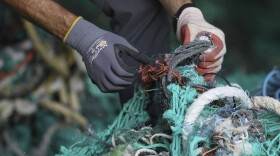When Hawaii students return to classes in the fall after completing the last months of the school year through distance learning, many may have lost the earlier progress they made for lack of in-person instruction.
A study by an Oregon-based educational research group estimated that children could lose 30% to 50% of their typical learning gains.
Hawaii public school students have been at home, learning in online classes and using teaching packets since March. The closing of in-person classes was part of the effort to slow the spread of COVID-19.
Researchers with the nonprofit Northwest Evaluation Association analyzed different factors that could impact a student’s distance learning such as chronic absences, the learning losses that happen over summer break and natural disasters that cause students to miss school for long periods of time.
The COVID-19 outbreak, however, is different from any other disaster researched before, said Beth Tarasawa, one of the study’s lead authors.
“We have some families that are really excelling in the current conditions with one-to-one devices at home and access to great technology and potentially a family member who can support learning at home,” she said.
“But we also know for a lot of our families it's not quite as blissful in the home environment, and that some families are working to get food on the table and facing all other kinds of economic insecurities that make the time a lot more traumatic.”
In Hawaii, principals like Janice Blaber at Keeau Elementary School on Hawaii Island are trying to find the best ways to level the resource divide, and find the best ways to help students learn.
About a third of Blaber’s students do not have reliable internet access, so she arranges to give students prepared video files.
“I asked teachers, what if we pre-recorded the content that you were delivering virtually,” Blaber said.
She loaded all of the pre-recorded content on a flashdrive and downloaded it into students’ laptops when they arrived to pick up their packets and technology devices.
For the children who weren’t able to pick up their education materials, Blaber brought it to them.
“A few days my VP went on the bus routes and a couple of days I went out,” she said. “We just met parents and kids at their normal bus stops and delivered books and we delivered instructional packets.”
Blaber is letting students keep their devices over the summer in hopes of stemming any learning loss during the vacation months. She had her teachers pre-record summer lessons for every single grade level.
“In the summertime, we'll have a time period where they can come and pick them up,” she said. “When we find out ... who hasn't picked them up, we'll go out on the buses again and deliver the USB drives and the enrichment for all of our students.”
Despite these extra efforts by educators, researcher Tarasawa explained that it will be impossible to fully recover missed learning unless educators collect data on how much students have already absorbed. That data collection would probably require widespread testing when students return in the fall.
“We've essentially evaluated schools and evaluated teachers and sorted them and ranked them and, at worst, we penalize those schools and teachers that are really serving our most marginalized communities,” she said.
“To me, this is the channel where we can reclaim that data and use it for good, right? So how can we make sure we're getting interventions to the kids that needed the most?”
It’s no surprise, but Tarasawa says students who were already vulnerable to learning loss prior to COVID-19 -- like English language learners -- will likely have been affected the most from a lack of in-person teaching.
The study also showed that students suffer high learning losses in math rather than English, and some children even fall a full year behind.
On a more positive note, the COVID-19 outbreak has expanded communication between teachers and parents, Tarasawa said.
“Some families are more connected to schools than they ever have been,” she said. “So that long-standing bridge between home and school, which we've always wanted to build, has been built in ways that it hasn't been before.”
It’s unclear how many Hawaii public school students either lack reliable Wi-Fi access, or have not been reachable during the COVID-19 outbreak. The state Department of Education has not yet compiled that data.
The department has sent out surveys to parents, teachers and students to collect that information and promises to report the results by early July.




